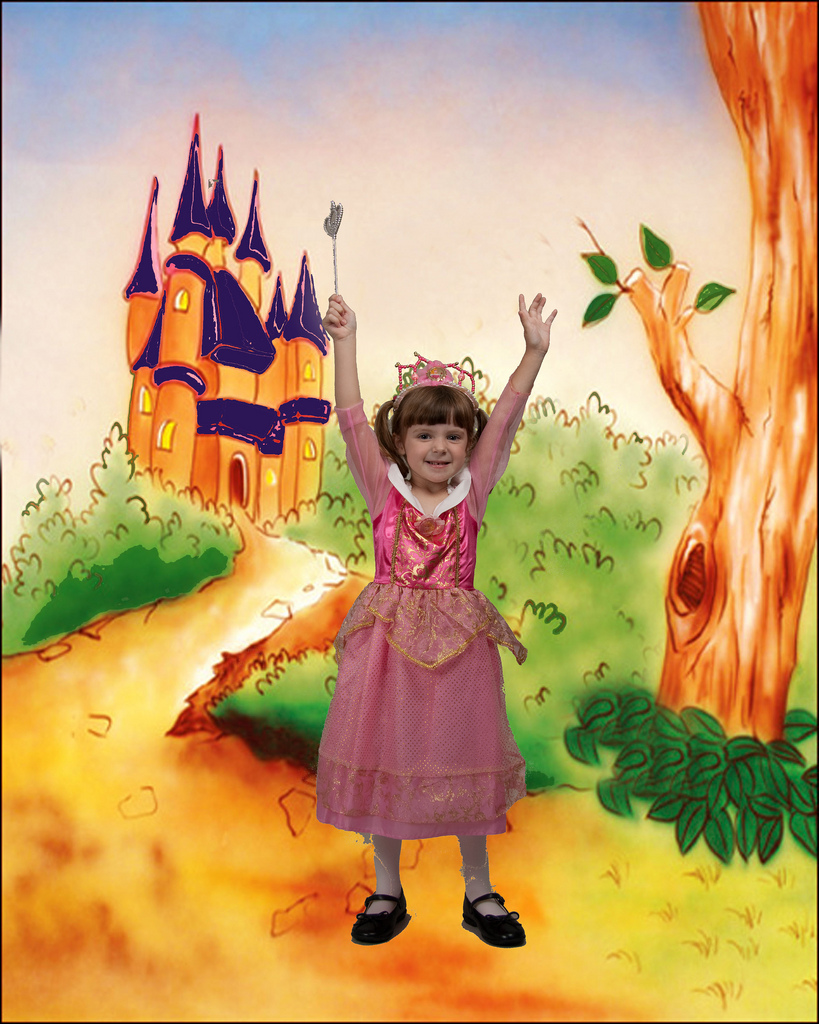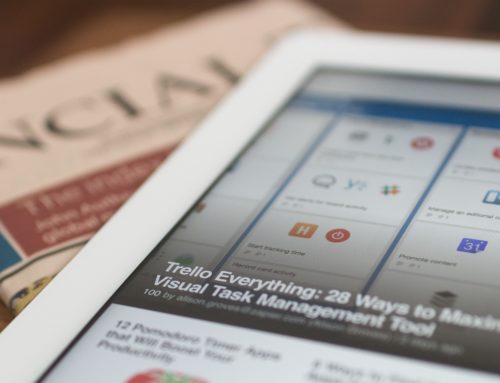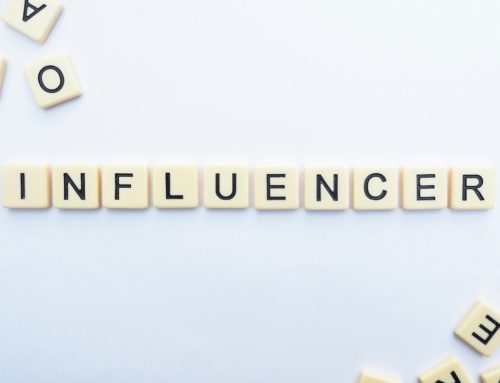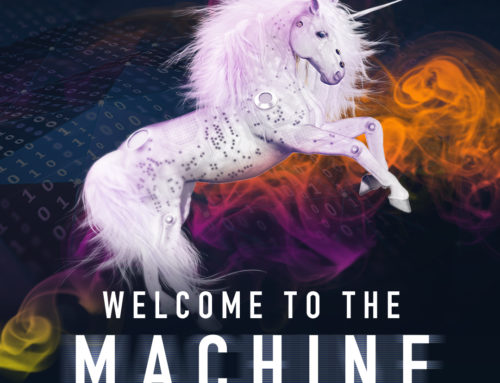 What struck me most about the PRSA 2011 Conference – which was just terrific, I got to see so many old friends and meet new ones – was that there were two things you couldn’t get away from.
What struck me most about the PRSA 2011 Conference – which was just terrific, I got to see so many old friends and meet new ones – was that there were two things you couldn’t get away from.
The first was the importance of storytelling.
Whether you went to Soledad O’Brien’s keynote (which was absolutely terrific), or sat in on Jay Baer‘s presentation, people kept talking about the importance of storytelling and how it is central to what public relations practitioners do.
The second was measurement.
Almost every session I sat in on had at least a passing reference to to measurement. How are people measuring their PR programs? How can you measure social media? What about measuring internal communications? And so on … and, of course, my own session focused on that as well. Numbers. People were talking – or wanted to talk – numbers.
The link that I didn’t see made, however, was that the best stories have numbers at their core. It’s quite possible that I just didn’t attend any sessions that did this, but it’s something I’ve been thinking about, and I wanted to share it with you and see what you think.
I will never dispute the importance of storytelling to public relations.
I’ve written about it before, and when I present, I try to tell stories too. Stories of former and/or current clients, stories of people I’ve come to meet and whose work I admire, and so on. I also try to tell the stories that numbers tell us, but that’s a story for another day.
People say that statistics don’t tell stories; that you are much more likely to reel people in with a beautifully told story, as opposed to droning off a list of statistics, the latest research findings on blah blah, etc.
Well, yes. Of course. But every good story is what it is because of numbers. Numbers provide context for the story.
Let’s take a fairytale, for example.
“Once upon a time …” or “A long, long time ago …”
Where are the numbers? They are implied. They imply that in a generation (25 years) or, more likely, several, have passed since the events related in this story unfold.
What does that tell us? That it was a different time, circumstances were different (maybe even magical), people may have thought/worked/behaved/reacted differently. It sets our expectation for what is to come.
“She was the most beautiful lady in all the land …”
Where are the numbers? The storyteller approximates and aggregates (which is what you do in basic stats) the relative (math alert!) comeliness of young women in the area (sample size: stats alert!), presumably of marriageable age.
What does that tell us? That the heroine – because we know she’s going to be the heroine by the use of those very words – comes out trumps in this sample size, and that the story is likely to be weaved around an event, or series of events that will, in all likelihood, after some kind of conflict end in a positive outcome for her.
“He was a tiny man, no bigger than my thumb …”
Where are the numbers? Look at the words. They are describing relative size (which we track by numbers) by using the average human thumb (usually around two inches) to put the character’s entire size in context.
What does this tell us? Well, that he’s very small, for starters, but it also prepares us for what is to come, which is likely that the character’s bravery is indirectly proportionate to his size, and so we can expect great things from him.
I could go on and on, but you get my drift.
It’s the same with our daily lives.
Try starting any sentence when you’re relating a story to someone without using a word or phrase that relies, implicitly or explicitly, on numbers to provide context. I’m italicizing not for emphasis but to point out how it’s practically impossible to avoid doing this:
“Yesterday, I was talking to …”
“The best birthday gift I received was …”
“In my 15 years of practicing medicine, I have never …”
We do this instinctively. So the issue with poor storytelling in public relations isn’t so much not telling the stories, or not using the tools at hand to do so creatively, but in not using the numbers well enough to frame the story.
If I told you there are 43.7 million refugees in the world, as UNHCR has found, and as my client, USA for UNHCR is trying to put into context with its Blue Key campaign, of course that’s probably not going to mean anything to you.
Because it’s just a number, albeit a very large one, and you don’t have a frame of reference to relate that to your own life.
But when Kellye Crane tells you that she was homeless for six months [number alert] following Hurricane Katrina and knows what it’s like to not have a home … like those 43.7 million refugees who may never [there we go again] go home … and that by purchasing a $5 Blue Key pin or pendant you could help a refugee get home, that puts a different perspective on things, doesn’t it?
Stories can be boring. Numbers can be enchanting. Or, stories can be enchanting and numbers can be boring.
It’s up to us to make them both work for our clients and organizations. And to do that, we first have to realize that, just like rama lama lama ke dinga de dinga dong, stories and numbers go together.
What do you think? Have you ever come across an instance of a great story where numbers, implied or not, are not used to help paint the picture? I’d love to know, as well as whether you think I’m crazy or not!
![[EVENT]: PR Hacks for Small Biz (online)](https://shonaliburke.com/wp-content/uploads/2021/06/FB-Ad-1200x800-01-01-01-Copy-500x383.jpeg)








[…] 5. When Stories and Numbers Collide […]
[…] bloggers do this all the time. They’ll tell us stories of their lives, or they’ll relate experiences or memories that stand alone as moments in time. They do this […]
[…] bloggers do this all the time. They’ll tell us stories of their lives, or they’ll relate experiences or memories that stand alone as moments in time. They do this […]
[…] our own business and what it is that we do, that we don’t allow ourselves to breathe. We seek to tell stories, but too often the stories are […]
[…] When Stories and Numbers Collide (waxingunlyrical.com) […]
[…] our own business and what it is that we do, that we don’t allow ourselves to breathe. We seek to tell stories, but too often the stories are too […]
[…] When Stories and Numbers Collide (waxingunlyrical.com) […]
I live by the mantra of #samerules #newtools. In storytelling, whether for PR or Corporate Communications, there is the expectation of transparency. True, one can’t reveal all the special sauces behind that great “steak” that does have some sizzle, but honest and direct thoughts must come through in that communication. Our analysis efforts help organizations track how effectively that honesty translates into engagement. The new tools of social media have brought a more authenticate style of communication to public relations, but the same rules of building that relationship or brand loyalty have not changed. If you want to measure an upward trend of engagement, use transparency and authenticity. It really isn’t that hard. Thanks, Shonali, for showing how the numbers can help your story.
@Todder4News I’m glad you didn’t think I was crazy, LOL. I do agree with you on #samerules #newtools (have you registered that, btw? :)).
Hey, thanks! We’ve been using the #samerules #newtools phrase publicly and in commerce for a couple of years. It’s amazing how hard it is to find an illustration that defies the fact that fundamentals are still key to everything. When you have time check out my blog http://samerulesnewtools.com There are plenty of examples of this philosophy posted. Cheers!
I think the numbers or measurement helps bring a frame of reference in when you are telling the story; it makes it identifiable.
I used to tell stories all the time but kept getting spankings for it; I’ve had to re-learn the art………….:)
Hope you are doing well.
@bdorman264 You? Getting spanked for telling stories? I don’t believe you. :p
You’re welcome!
@jenzings Thank you, Jen!
@shonali My pleasure! I’m really looking forward to the #BlueKey tweetup next week. Whee!
@jenzings We will ROCK the #bluekey next week. Ha!
Thank you for helping tell the story of the millions of refugees around the world! It’s really true, with the Blue Key we all have an opportunity to help tell one person’s story – whether it’s the story from the friend who told you about Blue Key, the story of blogger – like Kellye – who inspired you to get your own, or the story of the refugee who is longing to go home.
@lmeling You’re so welcome, and thank you so much for letting @rachaelseda and I work on the #bluekey campaign with you.
Numbers are analytical. Stories are emotional. Stories bypass the frontal lobe and get the limbic system champing at the bit. And the limbic system is what gets us to buy things.
@GrantHillFit OK, so THIS is why you are my trainer. And I thought *I* had a good vocabulary!
@cision @shonali Great post! Easy to read & some great advice! Today’s #WUL post: When stories and numbers collide http://t.co/aVmQRgCj #pr
This…is awesome. You just told me to make sure I read this, and I came over here…and the funny thing is, I just got done reading marijean ‘s post on stories and storytelling, and we were talking about it on her blog, and as a result it gave me an idea on storytelling, and I was in the midst of writing it…and then you and I started chatting. I’ll file this under “great minds” and all that.
But I love how you tied numbers in, without them necessarily having to be hard and fast numbers and metrics. You’ve definitely given me a lot to think about, and you’ll be getting a linkback in my post next week, as will Marijean.
@KenMuellermarijean We’re all telling stories. Storyteller alert!
Thank you, Ken. I realized the other day that when I speak, etc., I always tell the stories that numbers tell us, but I haven’t really been blogging about that enough. So I’m hoping to do more of that, because one of the things that I personally feel all PR pros need to get over – as I said to @Cision – is a fear of numbers – those who admit to it, at least. If we can use fairytales to do that… hey, works for me.
And thank you in advance for the link back. I’m still waiting to comment on today’s post over at your place, btw – thank you for that too. Go Boys in Blue!
@Shonalimarijean@Cision And you will get to comment. Livefyre is working on it now!
@KenMueller I just tried and still can’t comment. :(
@cisionnavigator Thank you!
@ginidietrich Aww. Thank you!
@shonali Do I know you?
@ginidietrich That’s not what one asks one’s fairy godmother.
@shonali HAHAHAHA!
@Shonali Burke this is one of my favourite posts of yours. I talk about storytelling every single day: its iimportance, its impact, its relevance and its beauty. We think in pictures, not words, so when we paint a picture by telling a story, the impact and results are so much greater than when sharing stats and figures alone. Cheers! Kaarina
@KDillabough Thank you! I think it might be one of my favorite posts too. And also I love that you reminded me of how I USED to spell “favorite,” so many moons ago… oops, there I go again. :)
What a sweet way to frame the point of numbers and storytelling. Fun–and insightful–post!
@jenzings Thanks! Any time I can get a fairytale reference in, I will. :)
@clarity4theboss – Cheers! and I agree.
It’s interesting you bring up the comparison between large and small numbers in stories. Do you find that larger the numbers the more numb people’s reaction may be? What can one individual do about 47 million people who need help? It’s a concept that is near impossible to fathom for me but reducing the idea to a single family of the 47 million helps to personalize what’s happening helps me to better understand the situation. Telling the story of one family to help represent 47 million is difficult but perhaps encourages a more personal reaction?
Thanks for sharing!
@Collectual That’s a really good question. I think it’s easy to not understand the context of large numbers… which is why it always comes back to context. Eg the “47 million refugees” is tough to comprehend, as you point out, but when you say “that’s the almost the combined populations of New York and Texas,” it’s easier to visualize – and then you really understand what an overwhelming problem it is.
I think the other thing that nonprofits realized early on is that people relate to the “little drops of water, little grains of sand” saying. Because if you just buy a $5 Blue Key (since we’re talking about that campaign), then it’s very easy to wonder how it’s helping. But when you think of the people who will ask you what that key means, when you wear/display it, and how you’re helping to spread the story, then it makes a difference.
Thank YOU for taking the time to comment!
@Shonali@Collectual I saw a speaker last year, Christine Caine from Australia, who is active down there in the area of combatting human trafficking. She did a great job of talking about those big numbers, and I can’t remember the numbers she used, but using the Blue Key numbers, it would go something like talking about “47 million people as 47 million Ones”. She helped us remember that each of those 47 million was an individual. With a face. With a family. With a story. And by telling those individual stories, you put at least one human face on that faceless, mind numbing number.
@KenMueller Exactly! @Collectual
@Collectual That’s a really good question. I think it’s easy to not understand the context of large numbers… which is why it always comes back to context. Eg the “47 million refugees” is tough to comprehend, as you point out, but when you say “that’s the almost the combined populations of New York and Texas,” it’s easier to visualize – and then you really understand what an overwhelming problem it is.
I think the other thing that nonprofits realized early on is that people relate to the “little drops of water, little grains of sand” saying. Because if you just buy a $5 Blue Key (since we’re talking about that campaign), then it’s very easy to wonder how it’s helping. But when you think of the people who will ask you what that key means, when you wear/display it, and how you’re helping to spread the story, then it makes a difference.
Thank YOU for taking the time to comment!
Wonderful tie-in to all that was discussed at #PRSAIcon. In gojohnab session, I loved that she used the analogy of ensuring your story is not “all sizzle, no steak” as people see through this. And, she used her own advice in her presentation. It seemed that every point she made, she used a clear story that allowed you to visualize what she was talking about – signs of a great storyteller! :)
@tressalynne The really cool thing about gojohnab is that not only does she tell stories well, she makes them come alive. I remember co-presenting with her at #bweny and it was just wonderful. Thank you for stopping by, Tressa!
@Shonali this IS a great post. I appreciate you including me in on the fun. Special thanks to you and @tressalynne actually…you both get two thumbs up in my book for your kindness. Shonali you will be happy to know that my presentation DID include measurement as I discussed the AMEC validated metrics and how they include storytelling. The great part of the AMEC work is it shows PR Pros how to account for all of their activities toward the end business outcome. LOVE IT!
@gojohnab YAY measurement! @tressalynne
Thanks for the mention! :)
Btw Kellye, Tressa and Johna, you guest-star here as well. :)
This is a great post! I was just talking go my colleague Erin about story telling, and am taking a marketing class and this was brought up there as well. I agree with @SocialMediaDDS that story telling is an art. I love how you brought in measurement. I’ve never thought of a story like that, but you’re right… the best stories have numbers at their core. Wonderful post Shonali, thank you!
@Cision Thank you so much! I can’t remember who it was who said it, but I kept hearing (at the conference) that statistics aren’t stories, etc. They ARE. They just have to be told properly. Which is why PR pros have to stop being frightened of math. But that’s another story. :)
I love this. And you.
@ginidietrich Ditto that.
@KDillabough That’s gonna be a BIG room… @ginidietrich
@ginidietrich Back at you. Do you think people will tell us to get a room?
This is a wonderful post shonali …truly…story telling is an art. The trick is to know how to make your stories relevant and interesting at the same time. I loved your fairy tale references…those authors were true story tellers and they inferred statistics and demographics that made the stories relatable and interesting. And the beautiful tie in to the Blue Key Campaign was appropriate and moving. Thank you for a delightful post and thank you for being an important part of a wonderful campaign.
Oh…and I hope you are continuing to feel better and stronger!
Claudia
@SocialMediaDDS Thank you! I try to be careful when mentioning clients, because it can be a slippery slope, but I’m so closely connected to that campaign, and tell its story frequently, that it didn’t make sense not to.
And I am feeling MUCH better, thank you! I had my second #mybootcamp session today and granthillfit made me SLAM that firehose. I yelled – literally – but it felt good. :)